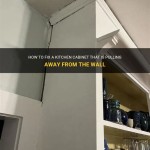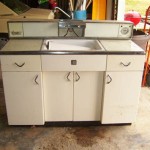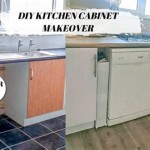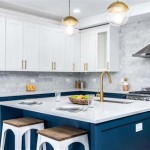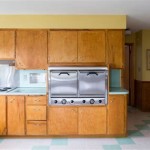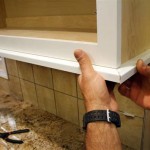Best Kitchen Cabinets on a Budget: Affordable Options for a Stylish Kitchen
Renovating a kitchen often ranks as one of the most expensive home improvement projects. A significant portion of the budget typically goes toward kitchen cabinets, given their central role in both functionality and aesthetics. However, achieving a dream kitchen does not necessitate exorbitant spending. Numerous affordable options exist that allow homeowners to upgrade their space without breaking the bank. This article explores some of the best kitchen cabinets available on a budget, focusing on types, materials, strategies, and considerations to help navigate the market and make informed decisions.
Understanding Budget Cabinet Categories
Budget-friendly kitchen cabinets generally fall into three main categories: stock cabinets, semi-custom cabinets, and Ready-to-Assemble (RTA) cabinets. Each category offers distinct advantages and disadvantages in terms of price, customization, and installation.
Stock Cabinets: Stock cabinets are pre-made cabinets available in standard sizes and styles. They are the most affordable option due to mass production and readily available inventory. Stock cabinets are typically found at home improvement stores and are ideal for straightforward kitchen layouts with minimal customization needs. While the selection of styles and finishes might be limited compared to other options, stock cabinets offer a practical and cost-effective solution for basic kitchen upgrades. Common materials for stock cabinets include particleboard with a laminate finish, melamine, or occasionally solid wood frames with MDF (Medium-Density Fiberboard) panels.
Semi-Custom Cabinets: Semi-custom cabinets offer a middle ground between stock and custom options. They are often built to order with slight modifications available, such as adjusting depth or height within a limited range. This allows for a degree of personalization to better fit the specific dimensions of the kitchen and accommodate unique design preferences. While semi-custom cabinets are more expensive than stock cabinets, they provide greater flexibility and potentially eliminate the need for extensive modifications during installation. Material choices are often broader, including higher-quality wood veneers and more durable finishes.
Ready-to-Assemble (RTA) Cabinets: RTA cabinets are shipped flat-packed and require assembly by the homeowner or a hired professional. These cabinets frequently represent a lower price point due to reduced shipping costs and minimal assembly labor included in the price. RTA cabinets are widely available online and offer a diverse range of styles and finishes. The quality of RTA cabinets can vary significantly, so it is crucial to research manufacturers and read reviews before purchasing. Assembly can be time-consuming, and incorrect assembly can compromise the cabinet's structural integrity. However, if assembled correctly, RTA cabinets can provide a cost-effective and stylish kitchen upgrade. Materials used in RTA cabinets often include plywood, particleboard, or MDF, depending on the brand and model.
Exploring Affordable Cabinet Materials
The material selection significantly impacts the cost and durability of kitchen cabinets. Opting for budget-friendly materials can substantially reduce the overall project expense. Common affordable materials include particleboard, MDF, and laminate.
Particleboard: Particleboard is an engineered wood product made from wood chips and resin, pressed together under high pressure. It is one of the most affordable cabinet materials, making it a common choice for stock and RTA cabinets. Particleboard is relatively lightweight and has a smooth surface, making it suitable for applying laminate or veneer finishes. However, particleboard is susceptible to moisture damage and can swell or crumble if exposed to water for extended periods. It is also less durable than solid wood or plywood and may not hold screws as securely. Therefore, particleboard cabinets are best suited for kitchens with good ventilation and minimal risk of water exposure.
MDF (Medium-Density Fiberboard): MDF is another engineered wood product made from wood fibers and resin. It is denser and more stable than particleboard, offering greater resistance to warping and moisture damage. MDF also has a smooth, uniform surface, making it an excellent substrate for painting or applying laminate. MDF is often used for cabinet doors and drawer fronts due to its ability to create intricate designs and its resistance to cracking or splitting. While MDF is more expensive than particleboard, it provides a better balance of cost and durability.
Laminate: Laminate is a thin layer of plastic or paper bonded to a substrate, such as particleboard or MDF. Laminate cabinets are affordable, durable, and easy to clean. Laminate is available in a wide range of colors, patterns, and textures, mimicking the look of wood, stone, or other materials. High-pressure laminate is more durable than low-pressure laminate and is better suited for high-traffic areas like the kitchen. While laminate is resistant to scratches and stains, it can be prone to chipping or peeling if not properly maintained.
Strategies for Minimizing Cabinet Costs
Beyond material selection, several strategies can help minimize the cost of kitchen cabinets without sacrificing quality or style. These strategies include considering refacing, painting existing cabinets, exploring alternative retailers, and opting for simpler designs.
Cabinet Refacing: Cabinet refacing involves replacing the doors and drawer fronts of existing cabinets while keeping the existing cabinet boxes intact. This can be a cost-effective alternative to replacing the entire cabinet system, especially if the existing cabinet boxes are in good condition. Refacing allows homeowners to update the style and finish of their cabinets without the expense and disruption of a full kitchen renovation. Refacing options include replacing doors and drawer fronts with new wood, laminate, or thermofoil materials. It also involves applying new veneer to the exposed surfaces of the cabinet boxes to match the new doors and drawer fronts.
Painting Existing Cabinets: Painting existing cabinets is the most affordable way to refresh the look of a kitchen. With proper preparation and the right materials, homeowners can transform outdated or worn cabinets into a stylish focal point. Thoroughly cleaning, sanding, and priming the cabinets before painting is essential to ensure proper adhesion and a smooth finish. Choosing a high-quality cabinet paint that is durable and easy to clean is also crucial. Painting cabinets can be a DIY project, saving on labor costs. However, it requires time, patience, and attention to detail to achieve a professional-looking result.
Exploring Alternative Retailers: Beyond traditional home improvement stores, several alternative retailers offer affordable kitchen cabinets. Online retailers often provide a wider selection and lower prices than brick-and-mortar stores. Discount retailers and salvage yards may also offer used or surplus cabinets at a fraction of the cost of new cabinets. However, it is crucial to inspect used cabinets carefully for damage or defects before purchasing. Comparing prices from multiple retailers and considering shipping costs is essential to finding the best deal.
Opting for Simpler Designs: Intricate cabinet designs with decorative molding, raised panels, or elaborate hardware can significantly increase the cost. Choosing simpler cabinet styles, such as shaker-style doors or flat-panel doors, can help reduce expenses. Opting for basic hardware, such as knobs or pulls, instead of more elaborate designs can also save money. Simpler designs are often easier to clean and maintain, making them a practical choice for budget-conscious homeowners.
Considerations Before Purchasing Budget Cabinets
Before investing in budget-friendly kitchen cabinets, several considerations should be addressed to ensure a successful and satisfying outcome. These considerations include evaluating the kitchen layout, assessing storage needs, and understanding installation requirements.
Evaluating the Kitchen Layout: The kitchen layout significantly influences the type and quantity of cabinets needed. Before purchasing cabinets, it is crucial to measure the kitchen space accurately and create a detailed floor plan. This will help determine the optimal cabinet sizes and configurations for the available space. Consider the placement of appliances, countertops, and fixtures to ensure that the cabinets fit seamlessly into the overall design. For small kitchens, maximizing storage space with taller cabinets or pull-out shelves is essential. In larger kitchens, consider incorporating specialty cabinets, such as pantry cabinets or island cabinets, to enhance functionality.
Assessing Storage Needs: Carefully assess storage needs before selecting kitchen cabinets. Consider the types and quantities of items that need to be stored, such as dishes, cookware, utensils, and food. Design the cabinet layout to maximize storage efficiency and accessibility. Consider incorporating features such as adjustable shelves, drawer dividers, and pull-out organizers to optimize storage space. For frequently used items, prioritize easy access by placing them in lower cabinets or drawers. For less frequently used items, utilize upper cabinets or pantry cabinets.
Understanding Installation Requirements: Installation can add significantly to the overall cost of kitchen cabinets. Before purchasing cabinets, understand the installation requirements and determine whether to hire a professional installer or tackle the project as a DIY endeavor. Stock and semi-custom cabinets typically require professional installation, while RTA cabinets can be assembled and installed by homeowners with basic carpentry skills. However, incorrect installation can compromise the structural integrity and functionality of the cabinets. If hiring a professional installer, obtain multiple quotes and check references. If attempting a DIY installation, carefully follow the manufacturer's instructions and take necessary safety precautions.

7 Ways To Make Your Kitchen Cabinets Look Expensive

How To Get A Stunning Kitchen On Budget

Best Kitchen Cabinets Guide 2024

Budget Friendly Diy Kitchen Cabinet Ideas The Turquoise Home

Affordable Kitchen Cabinets On A Budget Revamp Your Without Breaking Th

Budget Kitchen Renovation With Diy Shaker Painted Cabinets I

9 Best Kitchen Cabinets Of 2024

7 Kitchen Remodel Ideas On A Budget For High Impact Makeover

Budget Friendly Diy Kitchen Cabinet Ideas The Turquoise Home

9 Small Kitchen Remodel Ideas On A Budget Vevano
Related Posts

